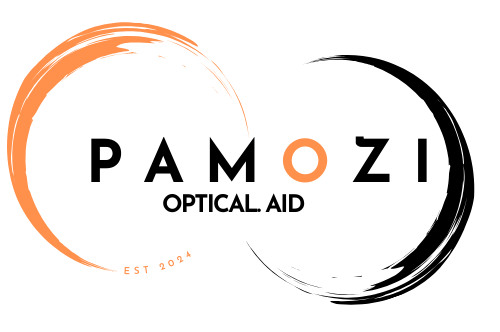Every Child Deserves Clear Vision
When children can see clearly, they can dream without limits.
Every Child Deserves Clear Vision
Eye care screening for children is not just about vision—it is about unlocking potential. When a child can see clearly, they can learn effectively, participate fully in school activities, and build confidence that will serve them throughout their lives. For many children, undiagnosed vision problems become invisible barriers to education and opportunities.
The Critical Window
Children’s vision develops rapidly during their early years, making timely intervention essential. Many vision problems, if caught early, can be corrected with simple solutions like properly fitted glasses. However, when left unaddressed, these same issues can lead to permanent learning difficulties, reduced academic performance, and limited future opportunities.
Through comprehensive eye care screening, early detection, and sustained community engagement, we can bridge the gap in vision care and ensure that every child has the foundation they need to learn and thrive.
Our Approach
At Pamozi, we believe that preventive care is the most powerful tool we have. Our children’s eye screening programs reach directly into communities, schools, and homes, bringing professional vision care to children who might otherwise never receive it. We work hand-in-hand with parents, teachers, and local health workers to identify vision problems early and provide immediate, practical solutions.
Why Eye Care Screening is Important
The Hidden Crisis
Vision problems are often silent obstacles that rob children and adults of their full potential. Unlike other health issues that present obvious symptoms, many eye conditions develop gradually and go unnoticed until they have already created significant barriers to learning, working, and living.
Academic Impact
For Children: Vision problems in children can significantly impact their learning, development, and overall well-being. Clear vision is fundamental to education, as up to 80% of classroom learning is dependable on visual input. Children with undiagnosed vision problems often struggle with reading, writing, and participating in class activities. They may be misdiagnosed with learning disabilities or behavioral issues when the real problem is simply that they cannot see the board, their books, or their work clearly.
Common Vision Problems in Children: Early detection of eye conditions such as nearsightedness (myopia), farsightedness (hyperopia), astigmatism, and amblyopia (lazy eye) can prevent long-term complications that affect a child’s educational journey. Each of these conditions presents unique challenges: nearsighted children struggle to see distant objects like classroom boards, farsighted children may experience eye strain during close work, astigmatism causes blurred vision at all distances, and amblyopia can lead to permanent vision loss if not treated early.
The Ripple Effect: When children fall behind academically due to vision problems, the impact extends far beyond the classroom. Poor school performance can lead to reduced self-esteem, limited educational opportunities, and fewer career prospects in adulthood.
Economic Consequences
Individual Level: Adults with untreated vision problems face significant employment challenges. Many jobs require good eyesight, and those who cannot see clearly may be unable to work effectively or may be excluded from certain professions entirely.
Community Level: When large portions of a community cannot see clearly, it affects economic productivity, limits human capital development, and perpetuates cycles of poverty.
Social and Personal Impact
Quality of Life: Vision problems affect every aspect of daily living – from reading and writing to recognizing faces and navigating safely. Adults and children with poor vision often become isolated, dependent on others, and unable to participate fully in community life.
Safety Concerns: Poor vision increases the risk of accidents, falls, and injuries, particularly among children and elderly adults.
The Power of Prevention
Early Detection Saves Futures: Most common vision problems can be corrected with proper glasses or treatment if caught early. Regular eye screening identifies issues before they become severe, allowing for timely intervention that can completely change a person’s life trajectory.
Cost-Effective Solution: Providing eye screening and basic vision correction is one of the most cost-effective health interventions available. A simple pair of glasses can transform someone’s ability to learn, work, and contribute to their community.
Breaking the Cycle: When we address vision problems early, we break the cycle of educational disadvantage and economic limitation that often affects entire families and communities.
The Urgent Need in Underserved Communities
Eye care screening isn’t just about vision—it’s about opportunity, dignity, and the fundamental right to see and engage with the world clearly.
In many underserved communities, eye care services are either unavailable or unaffordable. This creates a massive gap where millions of people live with correctable vision problems simply because they lack access to basic eye care.
Children at Higher Risk: Children in disadvantaged communities face a particularly challenging situation. They are at significantly higher risk of undiagnosed vision issues due to limited access to healthcare services, fewer resources for regular check-ups, and often lack of awareness about the importance of eye care. This disparity means that treatable conditions like myopia, hyperopia, astigmatism, and amblyopia go undetected, creating lasting educational and developmental barriers.
The Compounding Effect: When vision problems remain unaddressed in underserved communities, they compound existing inequalities. Children who already face socioeconomic disadvantages are further hindered by preventable vision problems, widening the gap in educational outcomes and future opportunities.
Challenges in Disadvantaged Communities
The communities we serve face significant barriers to accessing essential eye care:
- Limited Access to Eye Care – Lack of eye clinics, ophthalmologists, and affordable vision care services means families often have to travel great distances or go without care entirely.
- Financial Barriers – The cost of eye exams, glasses, and treatment can be prohibitive for families already struggling with basic needs, forcing impossible choices between vision care and other essentials.
- Educational Impact – Children with undiagnosed vision problems struggle academically, leading to poor performance, reduced self-esteem, and limited future opportunities.
These interconnected challenges create cycles of disadvantages that we at Pamozi works to break through accessible, community-based eye care solutions.
